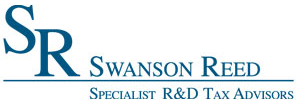Iowa Patent of the Month – June 2023
Cellencor, Inc. has committed themselves to developing microwave solutions that save energy, increase quality and maximize production rates. They are approaching this mission by combining microwave theory and real-world experience as they design high-power microwave systems.
The field of microwave systems has seen significant advancements with the introduction of solid-state components, offering benefits such as frequency agility and improved control. However, high-power microwave systems still face challenges related to impedance matching, power control, and applicator design. To address these issues, Cellencor has developed a method and system for exciting gas plasma generators or other gas plasma devices using solid-state microwave generators.
The proposed method involves producing a fast, high-power microwave ignition pulse from a solid-state microwave generator and then reducing the power to a defined maintenance level. The frequency and power level of the ignition pulse and maintenance level can be set by the user or automatically determined. By pulsing microwave energy, the gas plasma can be controlled effectively.
To ensure that the gas plasma is struck, the method includes monitoring return loss or load impedance to detect any impedance change. If the plasma is not initiated, the power can be increased, and the high-power microwave ignition pulse can be repeated. This iterative process allows for optimal tuning and control of the plasma generation.
The system incorporates a two-phase process to tune the microwave generator to the plasma apparatus. In the first phase, a frequency sweep operation is performed to identify the optimal frequency for the ignition pulse. In the second phase, after the plasma has been initiated and the microwave power and plasma generator impedance have changed significantly, the power is reduced to a level sufficient to maintain the plasma. The system automatically determines the new frequency with the best impedance match by sweeping up and down in frequency within a bounded range, preventing excess reflected power that could extinguish the plasma.
The invention also offers precise power control over a wide dynamic range and includes an integral one-port network analyzer function for impedance measurement. Adaptive power control ensures precise adjustment of power output to changing loads based on user-defined rules.
With the disclosed features, the high-power solid-state microwave generator provides improved frequency agility, power control, and impedance matching capabilities. The system’s modular architecture allows for various output power levels, and its microcontroller-based control system ensures high-speed real-time response.
Are you developing new technology for an existing application? Did you know your development work could be eligible for the R&D Tax Credit and you can receive up to 14% back on your expenses? Even if your development isn’t successful your work may still qualify for R&D credits (i.e. you don’t need to have a patent to qualify). To find out more, please contact a Swanson Reed R&D Specialist today or check out our free online eligibility test.
Who We Are:
Swanson Reed is one of the U.S.’ largest Specialist R&D tax advisory firms. We manage all facets of the R&D tax credit program, from claim preparation and audit compliance to claim disputes.
Swanson Reed regularly hosts free webinars and provides free IRS CE and CPE credits for CPAs. For more information please visit us at www.swansonreed.com/webinars or contact your usual Swanson Reed representative.
What is the R&D Tax Credit?
The Research & Experimentation Tax Credit (or R&D Tax Credit), is a general business tax credit under Internal Revenue Code section 41 for companies that incur research and development (R&D) costs in the United States. The credits are a tax incentive for performing qualified research in the United States, resulting in a credit to a tax return. For the first three years of R&D claims, 6% of the total qualified research expenses (QRE) form the gross credit. In the 4th year of claims and beyond, a base amount is calculated, and an adjusted expense line is multiplied times 14%. Click here to learn more.
R&D Tax Credit Preparation Services
Swanson Reed is one of the only companies in the United States to exclusively focus on R&D tax credit preparation. Swanson Reed provides state and federal R&D tax credit preparation and audit services to all 50 states.
If you have any questions or need further assistance, please call or email our CEO, Damian Smyth on (800) 986-4725.
Feel free to book a quick teleconference with one of our national R&D tax credit specialists at a time that is convenient for you.
R&D Tax Credit Audit Advisory Services
creditARMOR is a sophisticated R&D tax credit insurance and AI-driven risk management platform. It mitigates audit exposure by covering defense expenses, including CPA, tax attorney, and specialist consultant fees—delivering robust, compliant support for R&D credit claims. Click here for more information about R&D tax credit management and implementation.
Our Fees
Swanson Reed offers R&D tax credit preparation and audit services at our hourly rates of between $195 – $395 per hour. We are also able offer fixed fees and success fees in special circumstances. Learn more at https://www.swansonreed.com/about-us/research-tax-credit-consulting/our-fees/
Choose your state


















